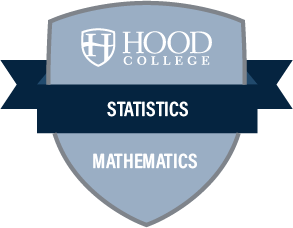Badge Overview
 Statistics
Statistics
Published Public {} Badge Class Data
Statistics

Issued by Hood College
Badge Description
The Statistics badge encompasses basic statistical methods as they apply to education and other fields. Topics include frequency distributions and their representations, measures of central tendency and dispersion, elementary probability, statistical sampling theory, testing hypotheses, non-parametric methods, linear regression, correlation and analysis of variance.
statistics
Probability
Data Analysis
Badge Criteria
This FOUNDATIONAL level badge is equivalent to a 3-credit, master's level course. Earning a grade of B or better is required for this badge.
Aligned Outcomes
-
Internal
Core Competencies
https://www.hood.edu/offices-services/institutional-assessment/institutional-learning-outcomesGSO_ResResearch
The badge earner will identify and explore relevant questions and/or problems by accessing, evaluating, applying and/or conducting research using discipline-specific strategies.
-
Internal
Core Competencies
https://www.hood.edu/offices-services/institutional-assessment/institutional-learning-outcomesGSO_CriReasCritical Reasoning
The badge earner will approach content and tasks with a critical awareness, framed by knowledge and skills appropriate to their discipline.
-
Internal
Core Competencies
https://www.hood.edu/offices-services/institutional-assessment/institutional-learning-outcomesGSO_ProbSolvProblem Solving
The badge earner will apply advanced disciplinary content knowledge and strategies to understand and address problems and questions relevant to their discipline and to which they have not previously been introduced.
